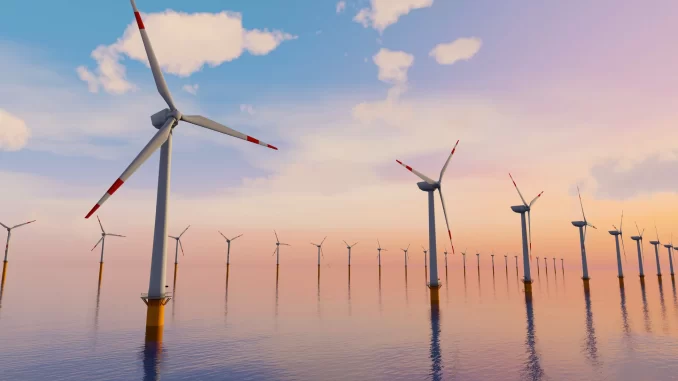
By Steve Levy
A new report issued by our Center for Cost Effective Government confirms that progressive policies implemented by New York’s Legislature designed to tackle climate change have caused energy rates in the state to skyrocket, with few environmental benefits.
In fact, these policies increased electric bills by approximately 50% over the six years after their implementation.
In 2019, the State Legislature enacted a sweeping law, the Climate Leadership and Community Protection Act (CLCPA), which imposed mandates seeking a 40% reduction in greenhouse gas emissions by 2030, and zero greenhouse gas emissions by 2050. It also calls for 100% renewable electricity usage by 2040.
But recently, New York’s government has been quietly telling the utilities to slow walk the decommissioning of the gas-fired power plants. And, once the November election was over, the governor officially retreated from the unrealistic mandate requiring electric heat in new buildings, pausing it until a federal lawsuit on the issue is decided.
The progressive policies unleashed by the legislature included a number of initiatives many now believe are regrettable, including:
- shutting down nuclear power plants
- refusing to implement fracking in New York
- refusing to approve needed natural gas pipelines
- prohibiting natural gas and requiring that all new buildings be heated via electricity
- imposing carbon penalties upon utilities, passing costs to consumers
- mandating that all cars be electric vehicles by 2035
Ironically, New York’s carbon footprint wound up being worse after the passage of this bill, while electric rates are far higher.
Curtailing the use of natural gas had devastating consequences, both economically and environmentally. It is the transition from dirtier coal and oil to cleaner natural gas that led to a drop of U.S. greenhouse emissions by 14% from 2005 to 2019, while emissions were increasing worldwide by over 20%.
Rates are slated to go up even more with The New York State Electric & Gas company saying it will charge 23.7% more in 2026, while National Grid is seeking increases that could raise bills in upstate New York by $600 a year. And Con Edison is seeking increases that would raise average gas and energy bills to a level costing $154 higher than what they were in 2020.
This lack of supply is exacerbated by the enormous energy output required to power the artificial intelligence (AI) revolution. Large companies at the forefront of AI innovation, including Amazon, Google, Meta, and Microsoft place immense strain on the grid. AI data centers are becoming large energy users, even outpacing electric vehicles in their power demand growth.
Overly ambitious policy initiatives to shut down traditional power generation to be replaced by less reliable wind and solar energy has resulted in significant negative consequences worldwide.
In Germany, for instance, an optimistic energy transition plan involved shutting down nuclear power plants. In 2011, Germany’s 17 nuclear reactors generated over 33% of the country’s electricity. The shutdown of these plants led to a return to using fossil fuels. Consequently, greenhouse gas emissions and reliance on foreign energy sources actually increased.
These extreme policies have been mirrored in California, which suffered similar setbacks, resulting in electricity costs being approximately 50% above the national average and gasoline costs 47% above the national average.
The average residential customer in New Jersey, which also promulgated extreme green policies, saw an increase of approximately 17% to 20% in 2025. One resident of Clark, New Jersey, claimed her bill rose from $174 in June to over $300 in July. This is despite New Jersey’s Public Service Electric & Gas having told the resident to expect an increase of 17%.
Even once-touted wind projects are losing their luster upon coming under greater scrutiny. According to NY Energy Ratings, “Developers are looking for a way to pay for the mounting costs of new wind energy projects. They have even asked the PSC to increase New York electric rates.” This is estimated to result in an increase of 4%, or $4.67 per month for ratepayers. Some projects are costing double what they were expected to.
At first, many proponents of offshore wind were touting that it was going to be saving ratepayers money. As these proclamations have been proven inaccurate, many lawmakers have shifted their talking points to now claim that it is an expense well worth it. The common green mantra was: “We need to move into clean power…It’s going to cost you an arm and a leg, but if you’re a good person, you’ll do it.”
Billionaire Bill Gates, who previously sided with the climate doomsday faction, has tempered his position, noting that the trillions being funneled toward climate initiatives could be better spent relieving worldwide poverty.
Getting back to the good person comment, are you a better person paying an arm and a leg for extreme green policies that will have little impact on reducing the carbon footprint decades down the road, or is it more cost effective concentrating those funds on saving lives today via better health care and economic opportunity, while simultaneously investing in innovations that can provide cheaper energy over a rational, gradual period of time?
Steve Levy is Executive Director of the Center for Cost Effective Government, a fiscally conservative think tank. He served as Suffolk County Executive, as a NYS Assemblyman, and host of “On the Right Side Podcast.” Costeffectivegov@gmail.com

